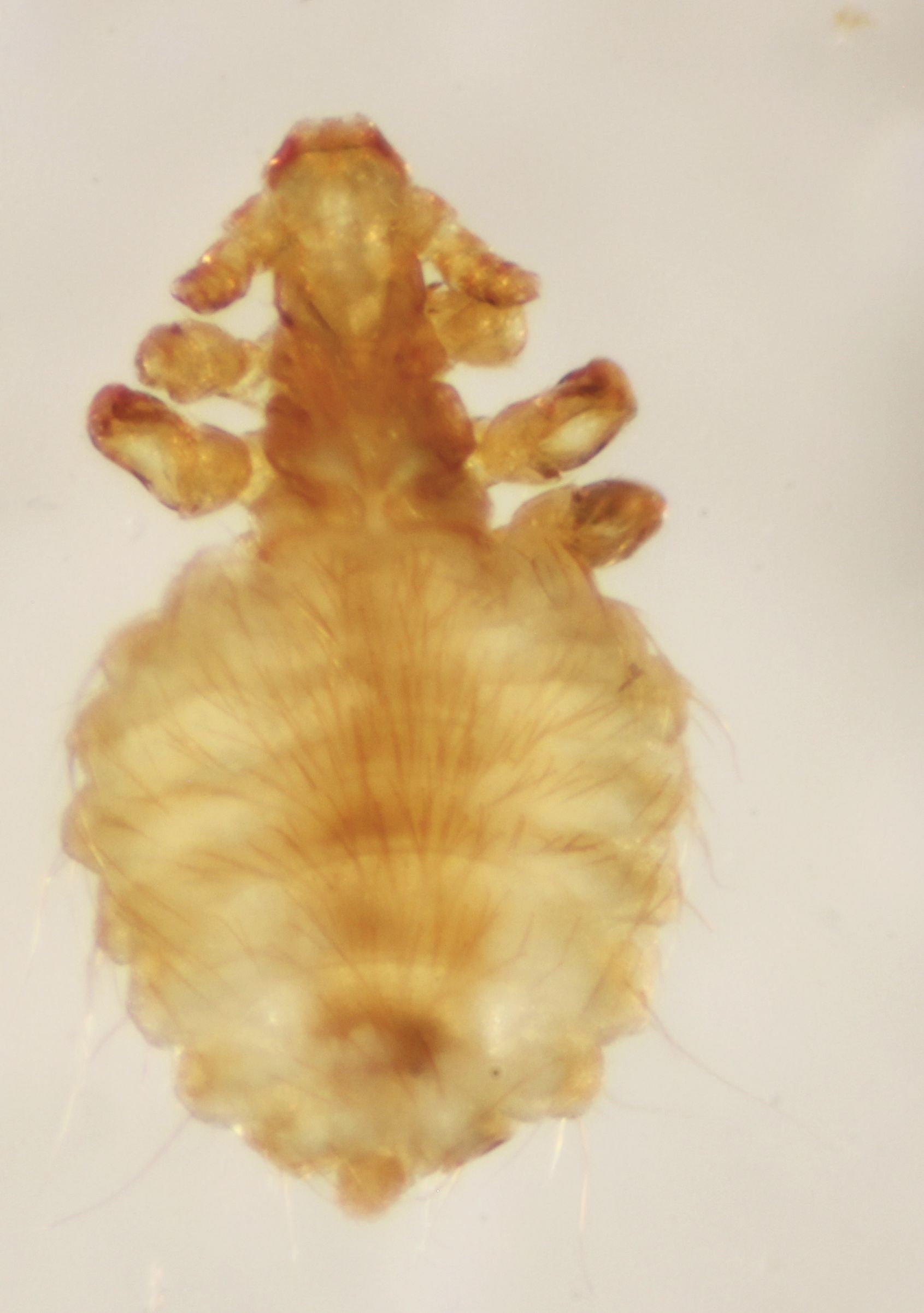46 Psocodea – Lice
Psocodea
The first two hemipteroid taxa we cover are the Phthiraptera, or lice, and the Psocoptera, or booklice and barklice. These two former orders are now usually grouped within a single order, the Psocodea. Older references may still separate them, and/or use the older names.
All members of the Psocodea are small and soft-bodied. They are, therefore, best preserved in ethanol.
“Lice” (formerly Phthiraptera)
The original name for this group of insects, Phthiraptera, can be translated literally as “wingless lice” (“phthir” = “lice”, “aptera” = “wingless”). All members of this group are ectoparasitic on vertebrates. To maintain this lifestyle, their bodies tend to be dorsoventrally flattened, and they are secondarily wingless even as adults. Secondarily wingless means that they evolved from ancestors that were winged as adults. All lice are paurometabolous.
There are about 5,000 species of lice described, which can be divided into two main subgroups. Mallophaga, the chewing lice, live on the feathers or hair of their hosts, feeding on dead skin and other debris. The Anoplura, or sucking lice, also live amongst the hair or feathers, but pierce the skin to feed on blood and other fluids. There is a Mallophaga specimen in the left-hand photo, and an Anoplura specimen on the right.
Humans are host to two species of Anoplura lice in the family Pediculidae. The head louse and the body louse are subspecies of Pediculus humanus; the pubic louse is a separate species, Phthirus pubis.




Feedback/Errata